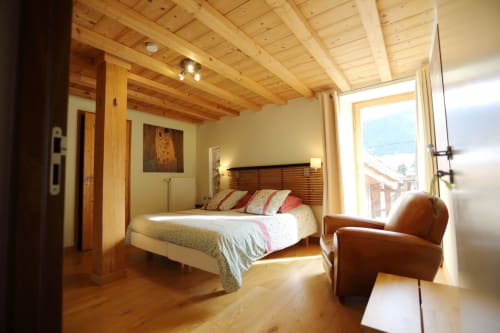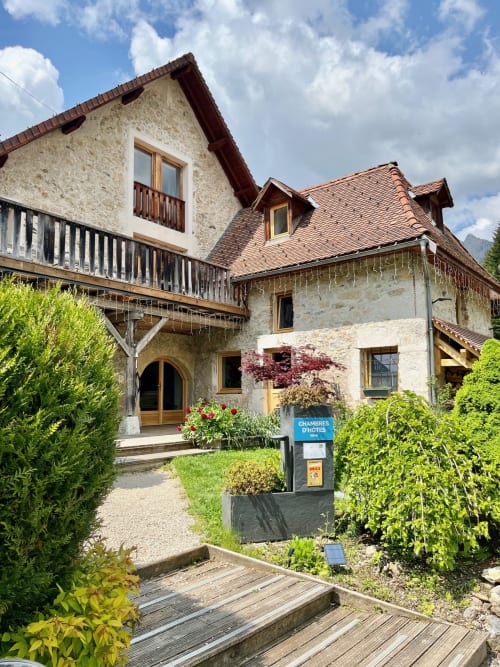
The rooms
The house consists of five refined, comfortable and personalized guest rooms.
Reception normally takes place between 5 p.m. and 7 p.m, before 6:30 p.m. on Mondays and Tuesdays.
Breakfast is included. If you would like to enjoy our dinners during your stay, please contact us by email, text or phone.
For people with reduced mobility, please note that we are in a mountain area and a few steps are necessary to access ValOmbré



















